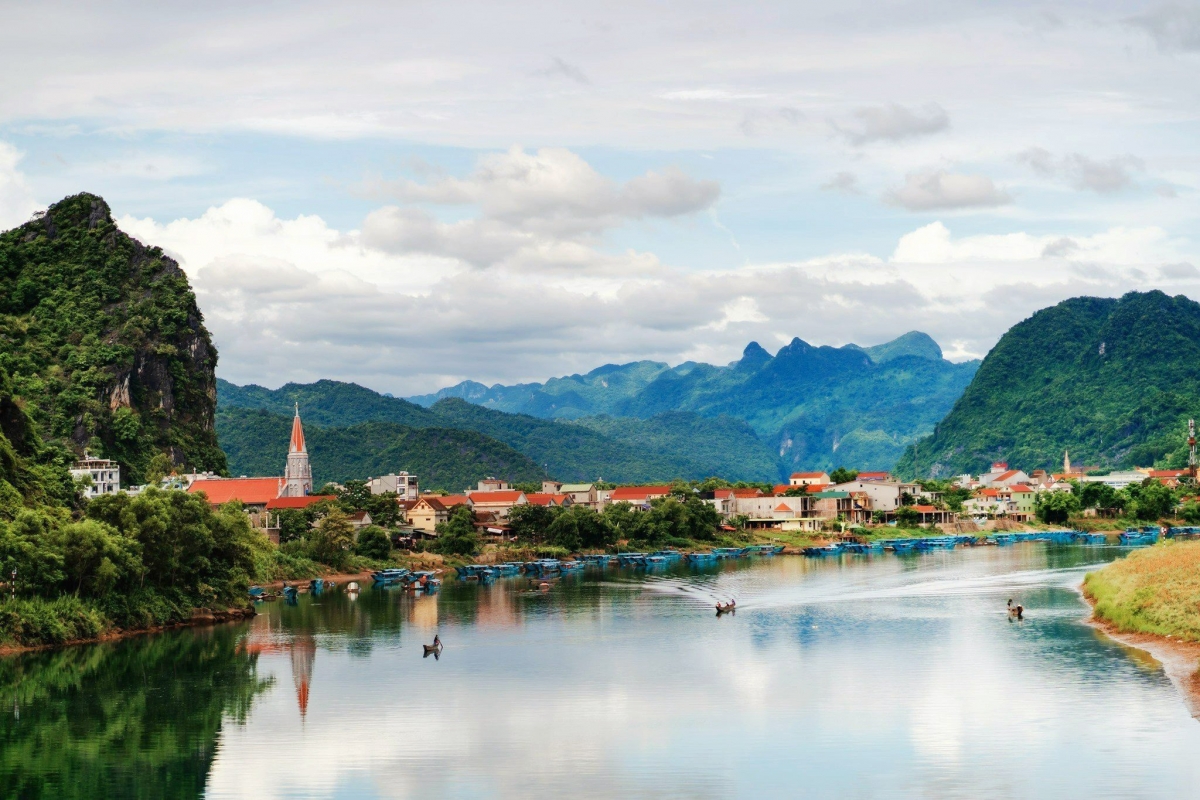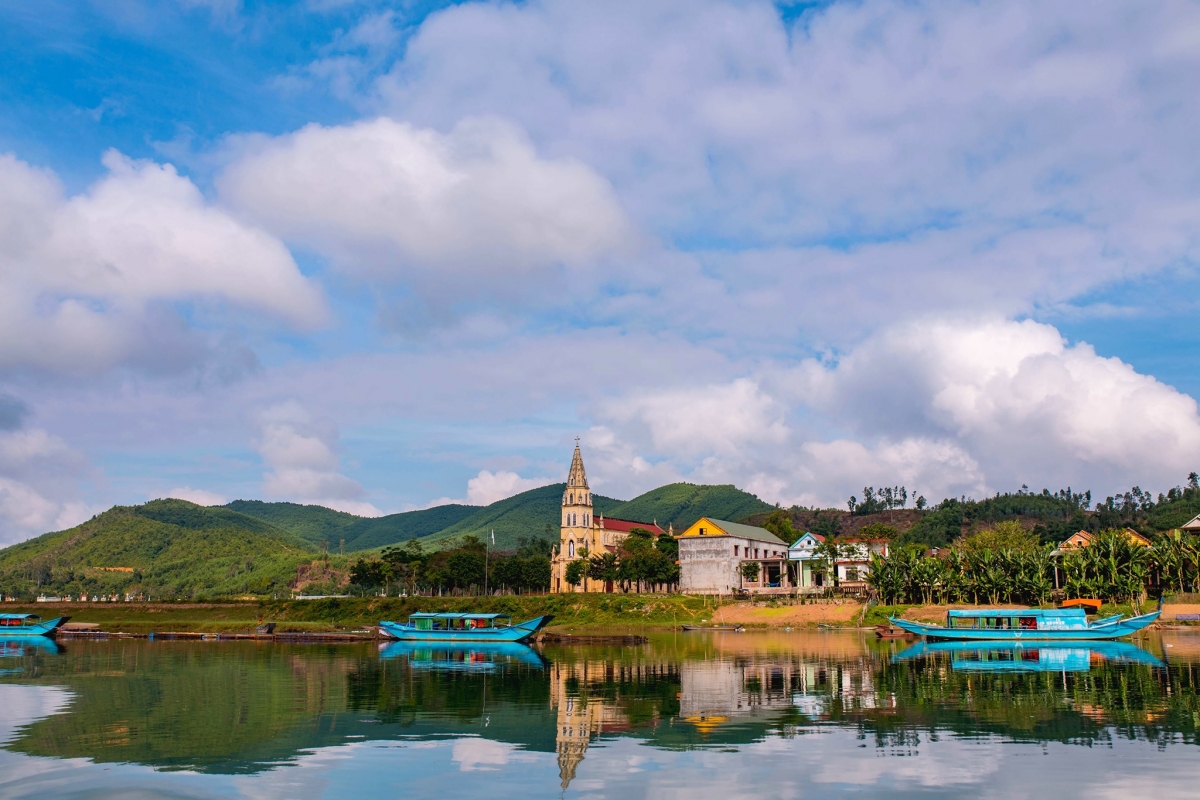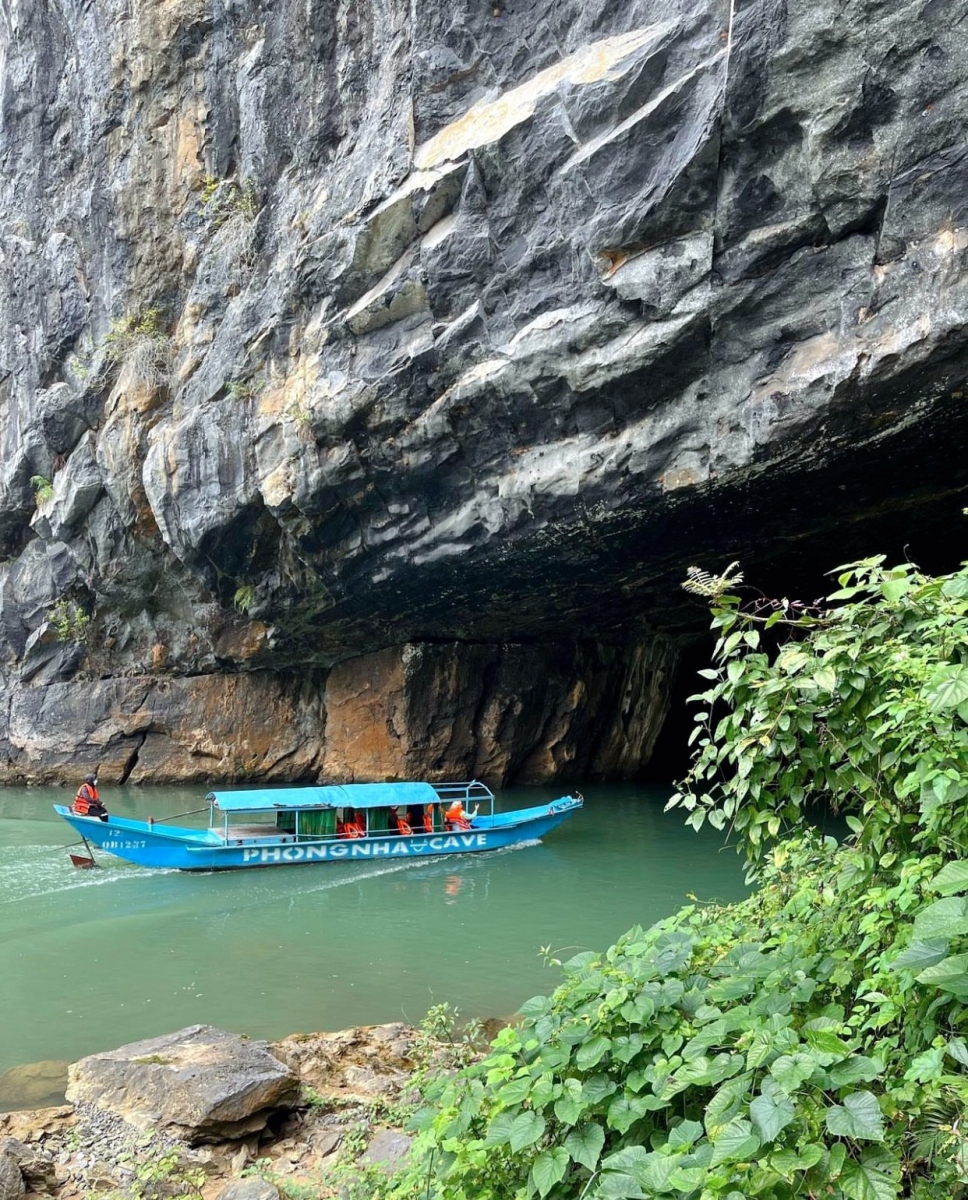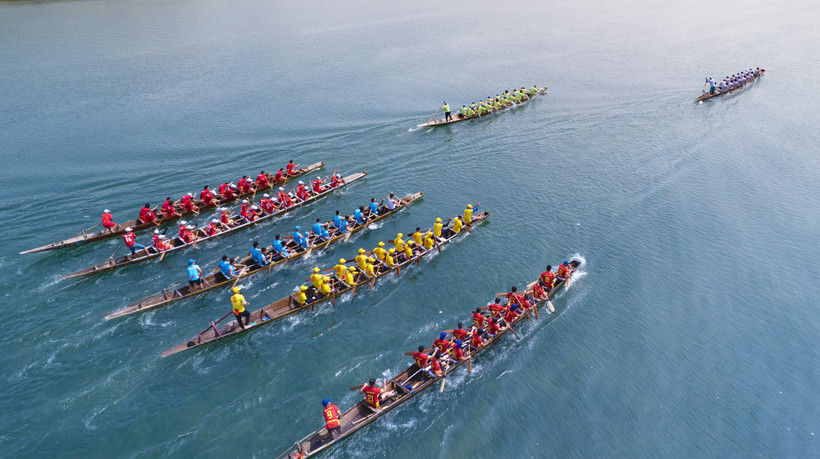Son River: The Heartbeat Flowing Through Quang Binh’s Heritage
In the heart of the Phong Nha – Ke Bang World Natural Heritage Site, where majestic mountains embrace the untouched beauty of nature, there flows a quiet river. Winding its way through limestone valleys and peaceful rural villages, it is the Son River – the lifeblood of Quang Binh’s heritage land. More than just a geographical landmark, this river stands as a cultural symbol, a reflection of the soul and memories of generations of local people. It is closely woven into their everyday lives, and bears witness to the heroic history of the Phong Nha region.
Son River — with all its natural beauty, cultural and historical significance, and its role in tourism development — truly deserves to be one of the most vivid symbols of Quang Binh. This river flows not only through the land, but also through the hearts of the people of Phong Nha, forever serving as a lifeline that sustains the vitality and everlasting beauty of this heritage region.

Originating from the Ke Bang limestone plateau, the Son River flows underground for over 7 kilometers through the mystical Phong Nha Cave before merging with the Chay River at the confluence in front of the cave entrance. Together, they form a vast and gentle waterway, winding like a green silk ribbon across the town of Phong Nha.
Stretching approximately 35 kilometers, the river serves not only as a vital water route for tourists to explore the inner cave, but also as a silent witness to the many changes in this picturesque land of mountains and rivers.
What makes the Son River especially unique is its striking seasonal transformation. During the dry season, the water turns crystal clear with a brilliant turquoise hue — the color of dissolved limestone — allowing you to see straight to the riverbed. The surface becomes mirror-like, perfectly reflecting the surrounding mountain peaks. In contrast, during the rainy season, floodwaters from the upstream bring silt, dyeing the river a reddish color and giving it a powerful, lively flow. This magical shift is one of the reasons why it is called “Son River” — with “son” meaning “red” in Vietnamese.
However, the river’s name is also tied to a tragic local legend — a story of forbidden love between a poor young man and a noble girl. Prevented from being together, they chose to end their lives in the river, sealing their vow of eternal love. Touched by their pure devotion, locals named the river “Son” as a tribute to their enduring bond.
This river doesn’t just cut through limestone landscapes — it flows with the soul of the countryside. Seen from above, the Son River meanders gracefully through the valleys like a soft silk ribbon, embracing cornfields, lush banana gardens, and peaceful villages dotted with church steeples reaching into the sky. Along its banks, cozy homestays and lively roadside eateries echo with the cheerful sounds of hospitality. Tourist boats gently travel up and down the river, carrying visitors toward the wonders of Phong Nha Cave. Amidst the wide current, small wooden boats of locals fish, harvest riverweed, and quietly create a vivid, authentic picture of rural life. In the distance, clusters of brilliant red hoa vàng anh (ochna flowers) flicker like tiny flames against the blue sky, casting delicate reflections on the water’s surface and adding a touch of brilliance to an already poetic landscape.

Not only experiencing the Son River goes far beyond simply sitting on a boat tour, but also paddling a kayak, check in at sandbanks along the river, or wander through charming, ancient villages. One unmissable experience is enjoying local cuisine right by the riverside. Grass carp raised in cages on the Son River are especially famous for their firm, naturally sweet flesh — a result of their diet of riverweed and plankton from the river itself. Dishes made from this fish have become regional specialties, contributing to the culinary identity of the Phong Nha – Ke Bang waterways. In addition, the river also blesses the locals with a wealth of natural products such as eels, gobies, and river shrimp — rustic yet flavorful ingredients that embody the true taste of Quang Binh.

The Son River is also a river of memory and history. During the resistance war against American imperialism, it served as a vital transport artery, used to deliver food and weapons to the front lines. Along its banks, traces of ferry terminals, bomb shelters, and wartime villages still remain — vivid reminders of a glorious and heroic era. Today, the river continues to play a role in shaping the unique cultural landscape of Quang Binh, hosting traditional boat racing festivals on special occasions such as national holidays and anniversaries of historic victories.

In the trend toward green and sustainable tourism, the Son River is an essential element in shaping the ecotourism model of Phong Nha. Local authorities and riverside communities are making increasing efforts to protect the environment, safeguard the water source, and reduce plastic waste. These practical actions not only help preserve the river’s pristine beauty, but also create sustainable livelihoods for local people — allowing them to both protect their heritage and benefit from it.
